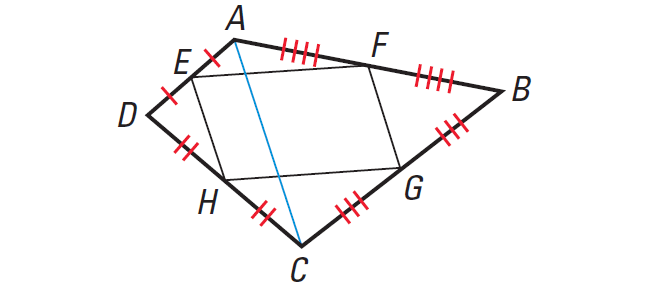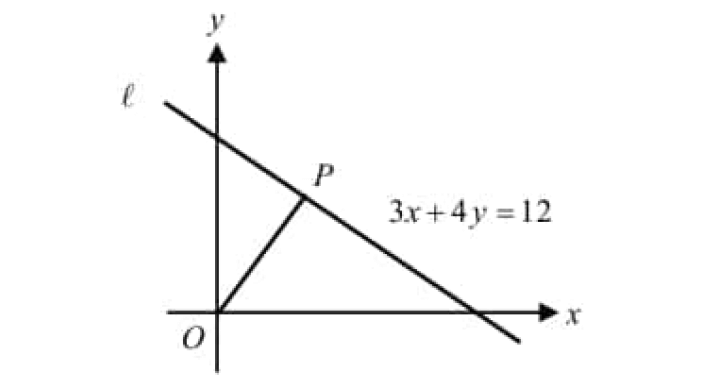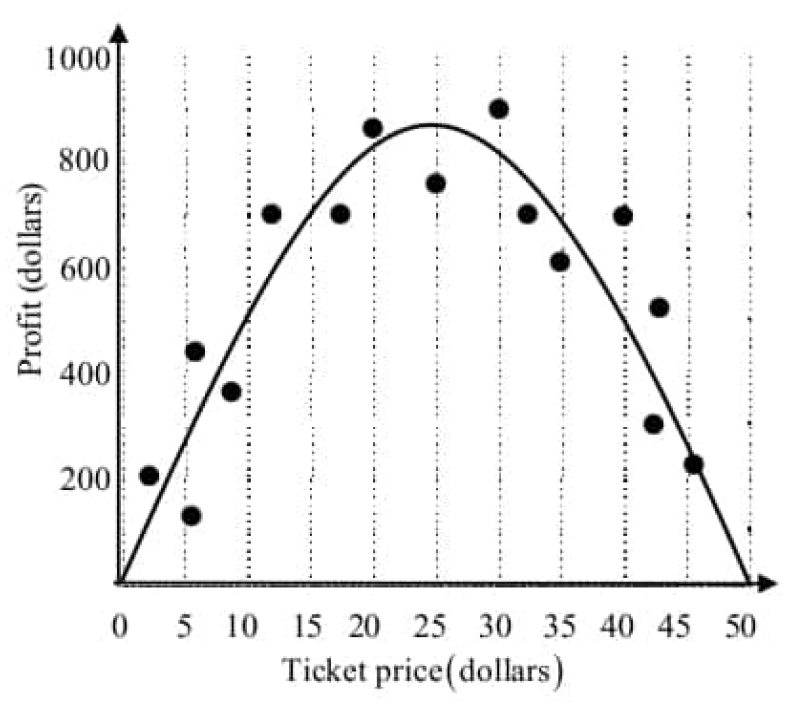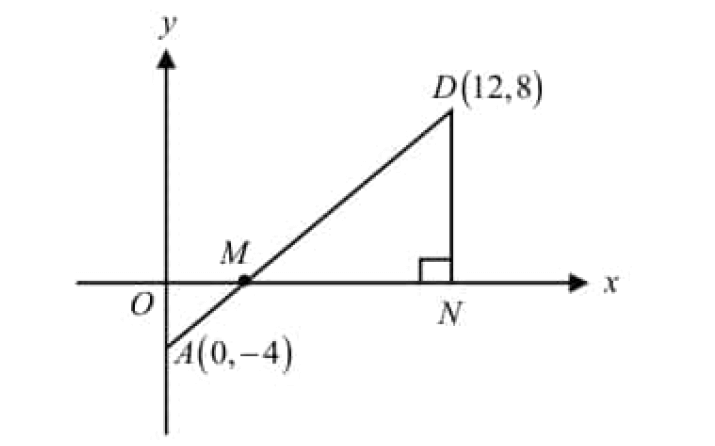WORKSHEET ON QUADRILATERALS
1. A simple closed shape made up of four line segments is called a _____.
2. The sum of the measures of interior angles of a quadrilateral is _____.
3. A parallelogram having all sides equal is called a _____.
4. A quadrilateral having exactly one pair of parallel sides is called a _____.
5. A quadrilateral with right angle at each vertex and having two pairs of equal sides is called a _____.
6. A quadrilateral with right angle at each vertex and having four equal sides is called a _____.
7. A quadrilateral having two pairs of equal and parallel sides is called a _____.
8. If the consecutive sides of a parallelogram are equal, then it is necessarily a _____.
9. Formula for area of a square in terms of the length of each diagonal d is _____.
10. Formula for area of a rhombus when the lengths of two diagonals are d1 and d2 is _____.
11. "A quadrilateral has at least one pair of opposite sides congruent" - What type of special quadrilateral can meet the above condition ?
12. When we join the midpoints of the sides of any quadrilateral, what type of special quadrilateral formed ? Explain your answer.
13. One angle of a quadrilateral is 150° and other three angles are equal. What is the measure of each of these equal angles ?
(a) 75° (b) 85° (c) 95° (d) 70°
14. Two adjacent sides AB and BC of a parallelogram ABCD are in the ratio 5 : 3. If the perimeter is 200 cm, what is the length of AB and BC ?
(a) 25 cm & 50 cm (b) 40 cm & 37.5 cm
(c) 62.5 cm & 37.5 cm (d) 60 cm & 62.5 cm
15. Five angles of a hexagon are 150°, 95°, 80°, 135° & 125°. Find the sixth angle.
16. The sum of the angles of a hexagon is_______
(a) 360° b) 540° c) 720° d) 1080°
17. If one angle of a parallelogram is 65o, then the measure of the adjacent angle is
(a) 115° (b) 65° (c) 125° (d) 180o
18. If two adjacent angles of a parallelogram are (5x - 5)° and (10x + 35)°, then the ratio of these angles is
(a) 1 : 3 (b) 2 : 3 (c) 1 : 2 (d) 1 : 4
19. Length of one of the diagonals of a rectangle whose sides are 10 cm and 24 cm is
(a) 25 cm (b) 20 cm (c) 26 cm (d) 3.5 cm

Answers :
1. Quadrilaterals
2. 360°
3. Rhombus
4. Trapezoid
5. Rectangle
6. Square
7. Parallelogram
8. Rhombus
9. Area of square = 1/2 ⋅ d2
10. Area of rhombus = 1/2 ⋅ d1 ⋅ d2
11. There are many possibilities.
Parallelogram : Opposite sides are congruent.
Rhombus : All sides are congruent.
Rectangle : Opposite sides are congruent.
Square : All sides are congruent.
Isosceles Trapezoid : Legs are congruent.
12. Let E, F, G and H be the midpoints of the sides of the quadrilateral ABCD shown below.

If we draw AC, the Midsegment Theorem for Triangles says
FG || AC and EH || AC ----> FG || EH
Similar reasoning shows that
EF || HG
So, by definition, EFGH is a parallelogram.
Hence, when the midpoints of the sides of any quadrilateral are joined, the type of special quadrilateral formed is parallelogram.
13. One angle of a quadrilateral = 150°
Let x be the and other three angles which are equal
Sum of interior angles of quadrilateral = 360
150 + 3x = 360
3x = 360 - 150
3x = 210
x = 210/3
x = 70
So, the equal angles is 70 degree.
14. Sides of parallelogram be 5x and 3x.
Perimeter of parallelogram = 200 cm
5x + 3x + 5x + 3x = 200
16x = 200
x = 200/16
x = 12.5
5x = 5(12.5) ==> 62.5 cm
3x = 3(12.5) ==> 37.5 cm
So, option c is correct.
15. Sum of interior angles polygon = (n - 2) 180
Number of sides of hexagon = 6
= (6 - 2) 180
= 4 x 180
= 720
Let x be the sixth angle.
150 + 95 + 80 + 135 + 125 + x = 720
585 + x = 720
x = 720 - 585
x = 135
So, the sixth angle be 135 degree.
16. Sum of interior angles polygon = (n - 2) 180
Number of sides of hexagon = 6
= (6 - 2) 180
= 4 x 180
= 720
Option c is correct.
17. In a parallelogram, opposite sides will be parallel. Then the parallel sides will make co-interior angles.
Sum of co-interior angles = 180
Let x be the missing angle.
65 + x = 180
x = 180 - 65
x = 115
So, option a is correct.
18. Sum of adjacent angles = 180
5x - 5 + 10x + 35 = 180
15x + 30 = 180
15x = 150
x = 150/15
x = 10
5x - 5 ==> 5(10) - 5 ==> 45
10x + 35 ==> 10(10) + 35 ==> 135
= 45 : 135
= 9 : 27
= 1 : 3
So, option a is correct.
19. Let a and b are the sides and c be the length of diagonal.
c2 = a2 + b2
a = 10 cm and b = 24 cm
c2 = 102 + 242
= 100 + 576
c2 = 676
c = √676
c = 26 cm
So, option c is correct.
Kindly mail your feedback to v4formath@gmail.com
We always appreciate your feedback.
©All rights reserved. onlinemath4all.com
Recent Articles
-
Digital SAT Math Problems and Solutions (Part 240)
Aug 02, 25 02:42 AM
Digital SAT Math Problems and Solutions (Part 240) -
Digital SAT Math Problems and Solutions (Part - 239)
Aug 01, 25 08:37 PM
Digital SAT Math Problems and Solutions (Part - 239) -
Digital SAT Math Problems and Solutions (Part - 238)
Aug 01, 25 06:10 AM
Digital SAT Math Problems and Solutions (Part - 238)


